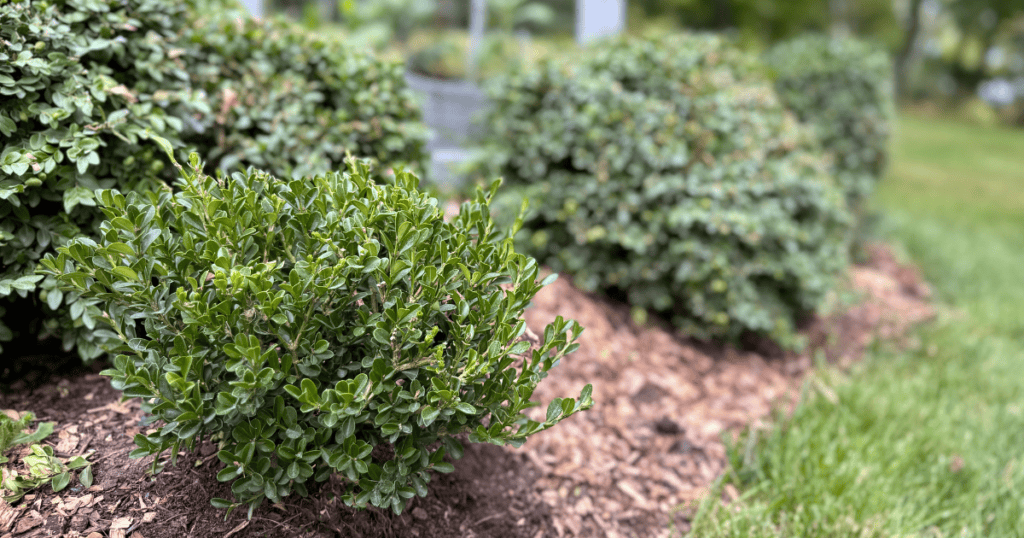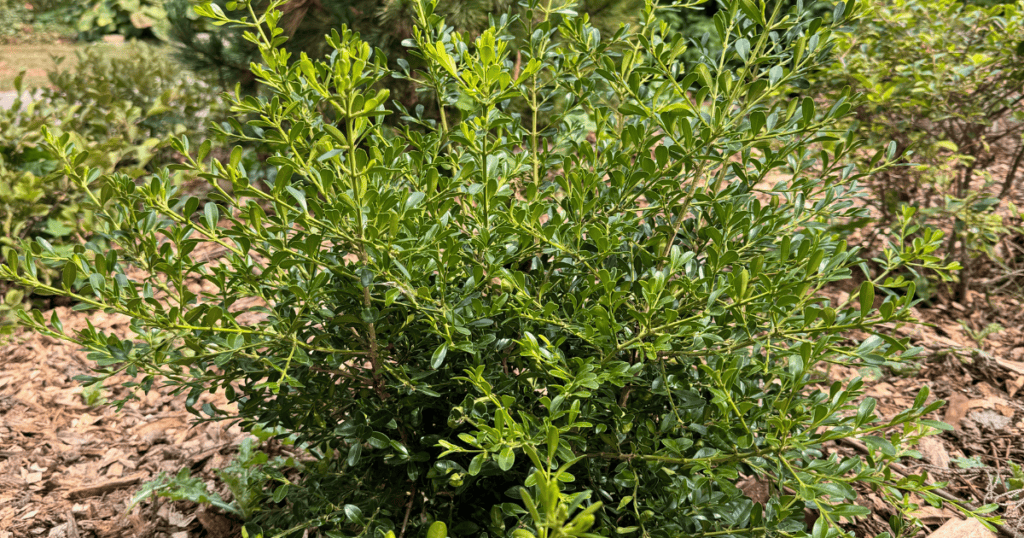Whether you love lush trees, joyful planters, abundant blooms, or artful hedges, Erin Schanen’s Wisconsin landscape is a garden designer’s dream. A skillful gardener, writer, and content creator whose videos chronicling her gardening journey have educated and inspired millions, Erin is always eager to introduce new plants to her garden – and to the world.
However, three years ago, her garden saw the addition of one particularly unwelcome visitor: boxwood blight. Erin first spotted “splotchy” black lesions on the leaves of a boxwood grouping on her property, and a little searching soon uncovered the disease’s telltale black streaks on the stems of her shrubs. Erin quickly reported the outbreak to her state’s plant disease diagnostic clinic, who confirmed her case as the first found in a home garden in her county, and the fifth confirmed case of boxwood blight in a home garden in the state of Wisconsin.
“I don’t find boxwood to be particularly fast-growing in my area,” Erin says, “which is why it’s particularly soul-crushing when something happens to them.”
A longtime superfan of boxwoods, Erin loves that they are cold hardy enough to take on Wisconsin’s chilly winters, prunable into a variety of creative shapes, and that the deer tend to leave them alone.
“The idea that I might not be able to have boxwoods in my landscape was pretty devastating,” Erin adds, “because they check off a lot of boxes for me in terms of a landscape design.”
Notably, their tolerance of both sun and shade makes them an attractive, versatile, and consistent design element in a landscape with variable sun exposure like hers.
Faced with new holes in the landscape and confronting design challenges that boxwood was uniquely positioned to address, Erin knew she couldn’t simply re-plant with another round of blight-vulnerable boxwood varieties.
That’s when she turned to Better Boxwood®.

“When I think about plant breeding, I often think about bloom qualities – perhaps a special color of flower or longer-lasting blooms. In the case of Better Boxwood, what we’re talking about is breeding that has actually led to the ability to continue growing boxwoods.”
Erin’s first Better Boxwood project was to create an attractive screening hedge on the side of her property using Skylight™. A fast-growing variety reaching 6-8’ high by 3-4’ wide when mature, its dense emerald foliage offers attractive screening across every season. While this variety takes well to pruning and can be clipped into topiaries and crisp hedges, Erin plans to allow it to take a looser, naturalistic form.

Her next Better Boxwood project takes full advantage of the collection’s diverse range of sizes and growth habits. Erin’s landscape plays host to a charming vegetable garden that’s enclosed by inverted arch gates and a tall fence that encourages deer to find their dinner elsewhere. The area is lined with an undulating assortment of boxwoods pruned into cloudlike forms. Erin is extending this unique design feature with the compact Better Boxwood Renaissance™, low-spreading Babylon Beauty™, and Heritage™, a variety that offers the traditional scale and habit boxwood fans crave.
Erin’s commitment to revitalizing her landscape with the help of Better Boxwood has not only allowed her to maintain the elegance and functionality of her garden but also shows that even the most challenging setbacks can be overcome with the right tools and knowledge. Whether you’re a seasoned gardener or just starting your journey, Erin’s story is a reminder that perseverance, innovation, and the right plants can lead to a thriving garden… even if blight comes knocking at your door!
To see more of Erin’s garden transformations and get inspired by her expertise, be sure to follow along on her YouTube channel, The Impatient Gardener, and be sure to catch her Better Boxwood video: Boxwood Is Back!

